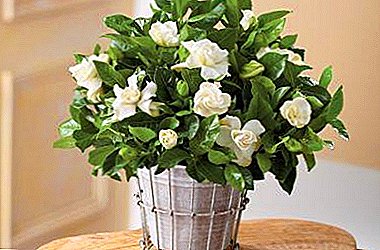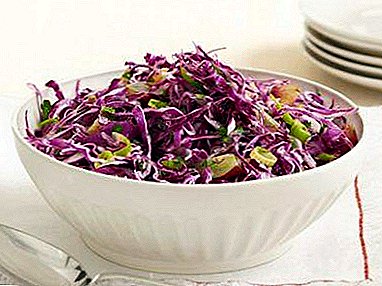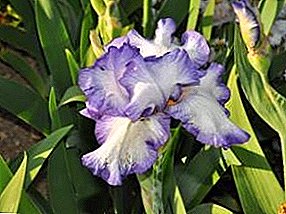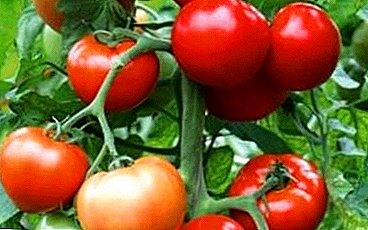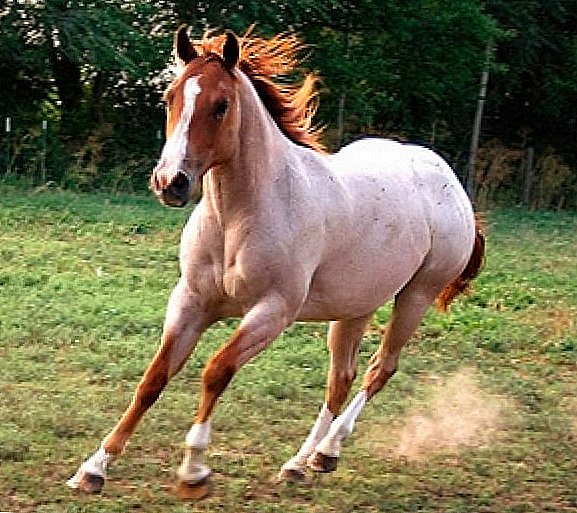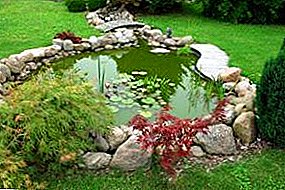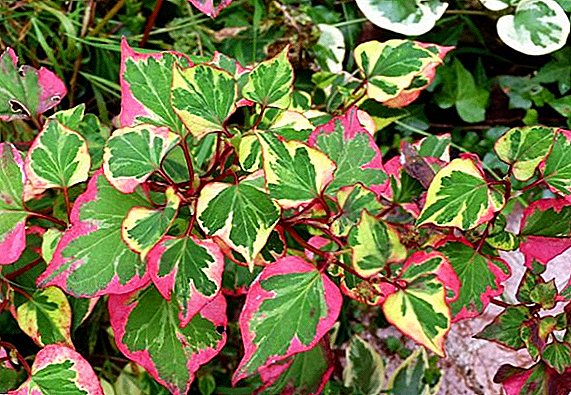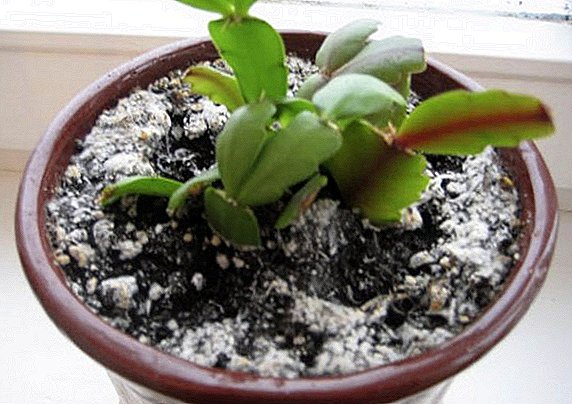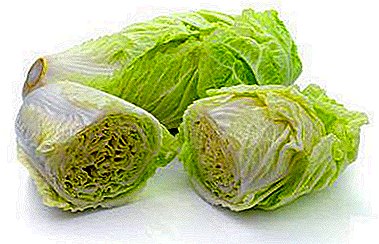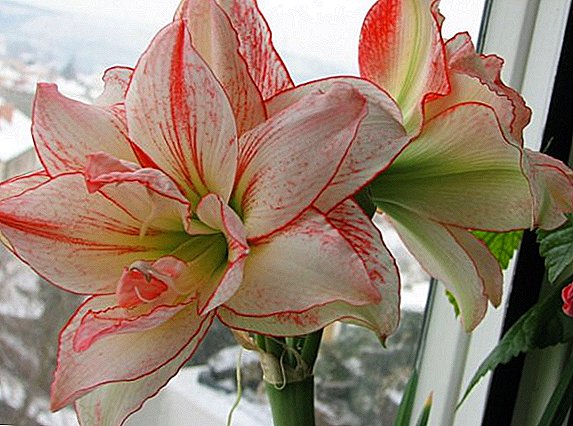 Among indoor flowers, hippeastrum is particularly attractive, which is also quite a complex plant in terms of planting and care. For this reason, not all flower growers manage to achieve its flowering. Below we will tell you all about its cultivation and overcoming possible problems.
Among indoor flowers, hippeastrum is particularly attractive, which is also quite a complex plant in terms of planting and care. For this reason, not all flower growers manage to achieve its flowering. Below we will tell you all about its cultivation and overcoming possible problems.
Hippeastrum - flower description
 Hippeastrum flowers belong to a perennial plant, emerging from the bulb. When it blooms and grows large linear leaves are formed, which can stretch up to 70 cm, and have a width of 4-5 cm. They are arranged in two rows, opposite each other.
Hippeastrum flowers belong to a perennial plant, emerging from the bulb. When it blooms and grows large linear leaves are formed, which can stretch up to 70 cm, and have a width of 4-5 cm. They are arranged in two rows, opposite each other.
Did you know? Although the majority of hippeastrum leaves differ in their usual green color, in a number of varieties the leaves have a purple color, which makes the plant particularly attractive even without flowering.With proper care on the hippeastrum, an inflorescence appears with 2-6 flowers. Flowers are large, in length can reach 15 cm, and their width is often 25 cm.
Their color can be very different: from white to dark red. After flowering, the fruit is formed in the form of a box, in which the seeds of hippeastrum ripen.
When fully ripe, they can be used for planting and receiving the bulbs, the benefit of germination they are 100%.
However, in the home growing this plant is quite complicated, as it differs in a number of features:
- From light and white varieties of hippeastrum is almost impossible to obtain seeds suitable for future crops, as they are hybrid.
- For the full growth of the plant in the summer, it is well planted in the garden, prikopat together with a pot in the soil.
- Despite the fact that it is quite difficult to achieve the flowering of hippeastrum at home, it is worth being prepared and for the fact that all efforts will be made for just 10-day flowering.
Choosing a pot for hippeastrum
 The size of the pot will depend directly on the size of the hippeastrum bulb. Note: when planting the bulb should be placed in the middle of the pot, leaving 5 cm to each edge. Thus, the pot for this flower must be at least 15 cm in diameter.
The size of the pot will depend directly on the size of the hippeastrum bulb. Note: when planting the bulb should be placed in the middle of the pot, leaving 5 cm to each edge. Thus, the pot for this flower must be at least 15 cm in diameter.
As for the height of the pot, on the contrary, it should not be too large, because the bulb does not need to be completely immersed in the soil (its upper half remains above ground). In addition, at the bottom of the pot will need to lay out the drainage of the stones, and above it is still quite a large layer of soil.
There are no clear limitations regarding the material of the container for hippeastrum, but it is still better to use ordinary plastic pots for this plant.
This is due to the fact that ceramics can be heated intensively in the sun, often causing overheating of the flower bulb. In this case, his death will be inevitable.
Selection of soil for hippeastrum
Hippeastrum flowers are quite demanding on the composition of the soil in the pot, so it must be prepared very carefully.
The most important requirement is lightness of the soil, which could quickly pass moisture through itself and ensure good air supply to the bulb.
It is also important that the soil has a lot of organic fertilizer, and its acidity level does not exceed the value of 6 pH.
It is rather difficult to get such a soil mixture by self-mixing, so it is better to go to a specialized shop and purchase ready-made land for the bulbous indoor plants. Truth and to the purchased soil is not superfluous to add a little sand. 
If, nevertheless, decide to prepare a soil mixture for hippeastrum yourself, then use such components for it (the ratio is indicated by numbers):
- clay-sod soil (2);
- leaf soil (1);
- humus (1);
- peat (1);
- sand (1).
Which hippeastrum bulbs should I choose?
Most often, hippeastrum breeds bulbs, which can be purchased at a regular flower shop. However, when choosing bulbs, you must remain as attentive as possible, as spoiled planting material will bring you only trouble.
It is worth going after them in spring or autumn, since this is the time that is ideal for forcing a flower.
The most important guarantee of getting a large and healthy flower is This is the use of large bulbs that store an adequate supply of nutrients. Thanks to this, not just a large plant will grow out of a bulb, but it is guaranteed to be flowering.
But in addition to large sizes, the bulb should also have a strong neck and bottom. Well, if the upper scales she will be dry and brown. If there are seals on the bulb, red or dark spots, decay - it has already deteriorated and is not worth buying.
But often the bulbs are sold not just in bags without soil, but also in pots. In such cases, during the purchase of a flower, it is necessary to inspect the roots of the bulb, which should be visible through the hole in the bottom of the pot.
 A healthy bulb will be indicated by:
A healthy bulb will be indicated by:
- white roots;
- firm and firm to the touch body of the bulb;
- dry, brown scales;
- lack of wet and color-altered sites.
Important! If the store offers substantial discounts on hippeastrum bulbs, be sure to ask the sellers what they are connected with. Very often this is done for the sale of rotten planting material, although prices may be reduced in connection with the completion of the planting season.
Where to place gippeastrum?
Hippeastrum love a moderate temperature, which during their growing season should not exceed +23 ˚С, but should not fall below +17 С.
However, if we are talking about the period of rest of the plant, then it is better to remove the bulb from the room and take it to the basement, where the temperature is at +10 С.
Since hippeastrum love a lot of sun, they only have a place near a window into which the light falls almost all day long. But only the sun's rays should not directly shine on the flower, it is better to curtain a dense fabric tulle window so that the leaves and flowers of the hippeastrum do not burn themselves.
 In this case, the pot with the flower should be constantly rotated, otherwise it can stretch in one direction.
In this case, the pot with the flower should be constantly rotated, otherwise it can stretch in one direction.
Good lighting is necessary for hippeastrum even after flowering, because without it, the bulb and seeds in the box will not be able to fully ripen for the next plantings.
The humidity of the air is also important for the flower, and if it is low, it will need spraying (watch only for water drops not to fall on the flowers).
Planting and reproduction of hippeastrum
Hippeastrum suggests planting in a variety of ways, among which both seeds and plant parts can be used at home. You can try each one.
Seed method
Planting hippeastrum in a pot by the seed method involves the full maturation of the box formed after flowering.
It is very important that during this period the plant receives enough nutrients, moisture and sunlight, because otherwise the seeds may not ripen.
When the box with them is completely dry, it simply breaks down, after which the seeds can be immediately used for planting.
 Consider that during seed reproduction of hippeastrum, in the first year of sowing, the bulb in the ground is just beginning to form, which means that only next year can it give an arrow with leaves. It may take another 1-2 years to get a full bloom.
Consider that during seed reproduction of hippeastrum, in the first year of sowing, the bulb in the ground is just beginning to form, which means that only next year can it give an arrow with leaves. It may take another 1-2 years to get a full bloom.
Nevertheless, despite the need for a long wait for flowering, it is thanks to the seed method that it is possible to obtain varietal gippeastrum with a vivid manifestation of all characteristics.
Vegetative methods
Vegetative breeding methods of hippeastrum involve either the use of daughter bulbs, which are formed near the main (they can be separated only after the diameter reaches at least 2 cm), or by dividing the bulbs into two parts.
Both of these options are used only for flower transplantation, when the bulb is dug out of the soil.
When planting hippeastrum with the help of daughter bulbs, flowering also occurs not in the first year. They need 2-3 years to mature and gain strength for flowering.
Landing technology
When planting bulbs in a previously prepared soil, it is important to consider the following nuances:
- a drainage hole and a drainage layer of expanded clay or stones must be present in the flower pot, which will not allow moisture to stagnate;
- when planting, the bulb does not penetrate the soil completely - its upper part must remain above the surface;
- during plant growth, it is necessary to renew the soil 1-2 times a year, since gippeastrumas very intensively suck out nutrients, and they do not need transplants more than once every 3 years.

Important! If during planting or transplanting the bulbs there are scales on it that are easily removed with your fingers, it is better to remove them immediately, as they are already dead and will rot on contact with moisture.
Growing hippeastrum in a pot
When growing hippeastrum at home, flowers should be given a lot of attention and care. Although in general it is to provide a good place for growth, watering and feeding, yet this plant has its own requirements for all these aspects.
Watering Hippeastrum
Hippeastrum in irrigation is quite whimsical, since it cannot be either over-filled with water or allowed to tolerate a lack of moisture. Also during each growing season of a flower, it requires special water balance:
- Most of the fluids hippeastrum requires during the flowering period. In particular, until the arrow with a flower stalk has grown to 15 cm, watering should be moderate, allowing the top layer of soil to dry out between waterings.
However, immediately after the appearance of flowers, watering should be enhanced, although this does not at all mean that there should always be a swamp in the pot. Excess moisture can ruin hippeastrum.
- In the periods before and after flowering, watering should also be moderate, with the top layer of the soil drying out.
- When the plant is sent to rest, it will need moisture no more than once every 1.5 months. At the same time it is worth making a lot of liquid in the ground.

Please note that water should not fall on the bulb - it should be poured only into the soil.
Fertilizer and dressing
Fertilizer for hippeastrum must be selected based on the stage of flower development. In addition, it is important to alternate between mineral and organic supplements.
As the first, it is better to buy special fertilizers intended for bulbous indoor plants. Feeding gippeastrum passes according to this scheme:
- when the plant blooms, we enrich the soil with nitrogen, potassium and phosphorus;
- when the plant is just beginning to grow from the bulb - with nitrogen and potassium;
- A month before the plant should go to a resting stage, all feeding should be stopped.

In addition, if you only transplanted or planted hippeastrum - the first feeding should be done no earlier than 1 month.
How to make gippeastrum bloom?
It often happens that the bulb gives arrows with leaves for several years in a row, but the flower stem does not appear on it. The first reason may be too small an onion, which simply does not have enough strength to bloom, although the reasons may be hiding in the care:
- If the bulb is small, it must be fed to her to gain strength, and then after a few months there will be flowering.
For feeding such a bulb, use potassium and nitrogen, and also do not forget to provide it with a lot of light.
With intensive rearing, the bulb does not require a dormant period, that is, the feeding of hippeastrum can be carried out until the appearance of the peduncle.
- In order for a flower to appear, it is important for the bulb to regain its strength and lay an arrow that appears only after each 4 leaflets.
- The reason for the lack of flowering can be lack of nutrition, which is even strong
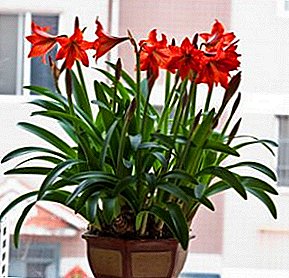 the bulb will not give the opportunity to release the arrow.
the bulb will not give the opportunity to release the arrow.To prevent this, try to change the topsoil every year in a pot with a plant, and repot it every two years.
Also, make correct and timely feeding in accordance with the needs of the flower.
- Take care of sufficient lighting, since in its absence the light-loving hippeastrum will also not bloom. Sometimes, even in the dormant period, the bulb should be left on the illuminated window sill.
- It is difficult to achieve flowering of hippeastrum in too spacious pots. Therefore, make sure that no more than 5 cm remains from the bulb to the walls of the pot, and it is better if there is only 3 cm left.
- After each flowering, send the plant to rest, which should last from 2 to 3 months. At this time it is important for the flower to remain in a cool and dark place.
Did you know? Hippeastrum are found in the wild. In tropical latitudes, there are about 75 species of this flower, and although the number of varieties of indoor hippeastrum is several times smaller, they are much more attractive.
Rest period and transplant
 Hippeastrum requires care and after flowering. He needs to help recuperate and, if necessary, transplantation can be very useful.
Hippeastrum requires care and after flowering. He needs to help recuperate and, if necessary, transplantation can be very useful.
The fact that the plant is ready to rest, you will be prompted by its leaves and bulbs in size (and of course the faded flower).
For the rest, the plant can be taken directly to the basement with leaves. In 2-3 months, the bulb will take all the nutrients from the leaves and be able to gain strength for another vegetation and flowering. Leaves can only be removed after they turn yellow and dry.
Hippeastrum will be ready for transplanting bulbs, either before retirement or after it.
During the period of active growth of leaves and flowering, the plant should not be touched, since by such manipulation you will disturb its growth and can destroy it.
It is possible to replant this flower once every two years, however, annual transplants also will not interfere with it.
Pests and diseases of hippeastrum
In case of improper agricultural practices on hippeastruma, pests can appear that are important to immediately destroy:
- If you notice an aphid on a flower that feeds on leaf juice, Actellic will help to remove it.
- Mealybugs with a massive lesion can completely destroy the plant, since they adversely affect not only the leaves, but also the bulb. If the plant is severely affected, then it is better to throw it away.
In general, the worms must be collected from hippeastrum using a cloth moistened with soapy water. From hard-to-reach places, they can be reached with gauze dipped in cologne, wound on a shelf.
The use of karbofos also helps (20-40 drops of a substance are added to 1 l of water for spraying).
- When the leaves of the gippeastrum are covered with a silver bloom and cobwebs, this is most likely a consequence of the presence of the spider mite on the plant.
It is necessary to fight it by removing the affected leaves and washing them with warm water. To prevent its occurrence, regularly ventilate the room where the gippeastrum stands.

But it is useless to fight mosaic, so the plant affected by it can be immediately thrown away.
Planting and caring for hippeastrum are quite complex and require a lot of patience from the grower. You have to be prepared for the fact that the plant does not produce annual flowering, especially if you used seeds for planting or your own daughter bulbs.
You will not be able to see the flowers on the hippeastrum even if you do not provide him with the necessary care. Therefore, before starting to grow a flower, learn all the details of this process.


 the bulb will not give the opportunity to release the arrow.
the bulb will not give the opportunity to release the arrow.